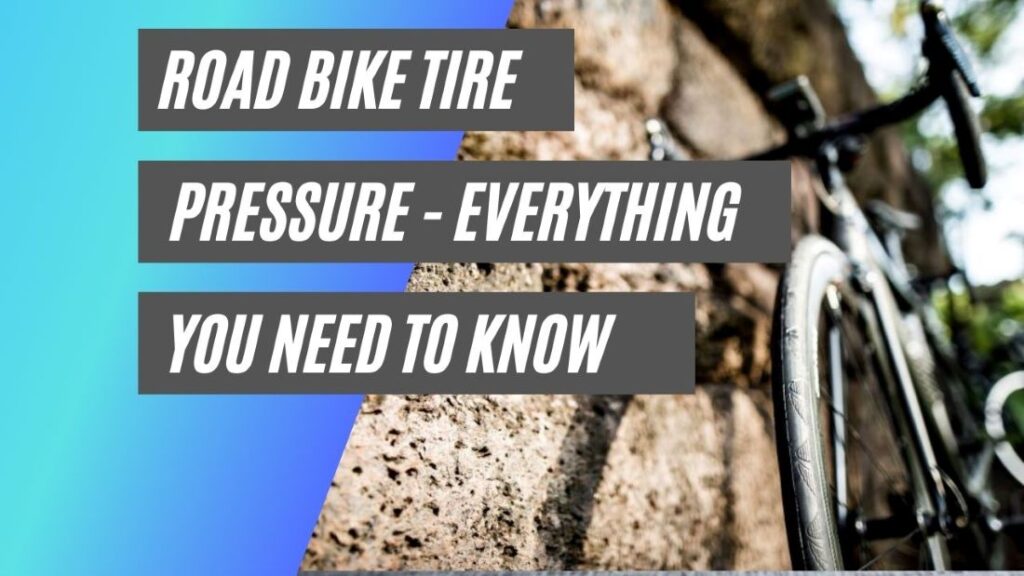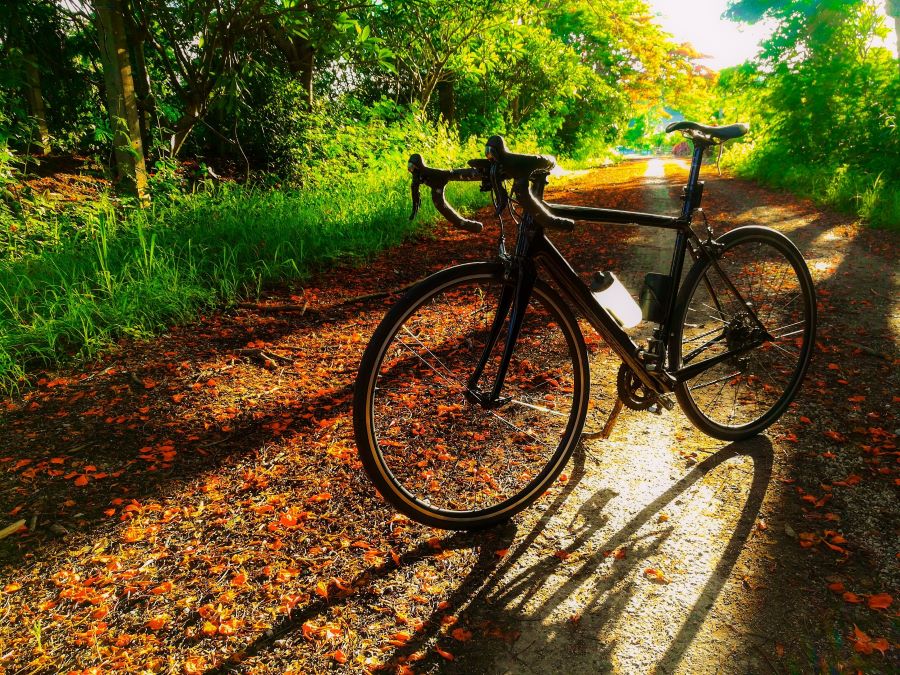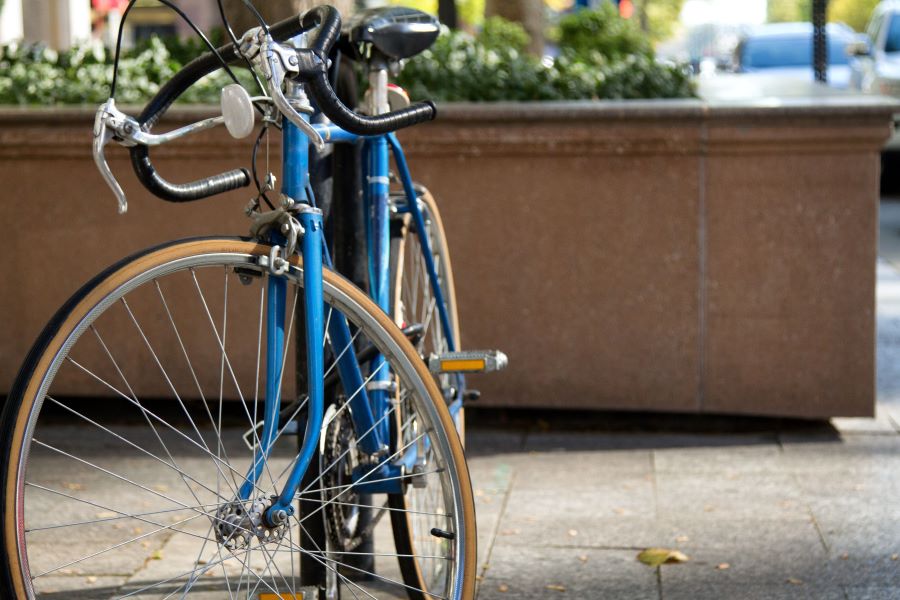This post may contain affiliate links. If you click an affiliate link and make a purchase, I may earn a commission. Also, as an Amazon Associate, I earn from qualifying purchases.--
What is the one thing in your road bike that costs nothing but your bike can’t function without? The answer is simple: the air pressure in your tire.
Tire pressure plays an essential role in ensuring your bike performs at its maximum potential.
The ideal tire pressure for a road bike will range from 80-130 PSI. The tire pressure depends on the tire’s structure and the rider’s weight. A lighter rider of 55kgs may only need a tire pressure of 80psi, and a heavier rider of 110kgs may need up to 130psi.
In addition, it may also vary depending on the road conditions, weather, and temperature.
If you are new to road biking, you may get intimidated by the multiple pieces of jargon bikers use to describe tire pressure.
Worry no longer!
In this article I will go through:
- The recommended tire pressure for your bike
- The recommended pressure for your weight
- The correlation between performance on your road bike and tire pressure
- Factors that affect tire pressure for a road bike
- How to measure the tire pressure on your road bike
Let’s get into it…

What is the Recommended Tire Pressure for a Road Bike? (With Weight + Other Factors)
Many tire manufacturers offer pressure calculators or pressure charts for their road bike tires. These tools help determine the optimum pressure the tire needs based on the size of the tire and the weight of the rider.
Moreover, there are some things you should be mindful of while adjusting your tire pressure according to the charts:
- Always keep an eye on the width of the inflated tire. If it is more than the actual width stated on the chart, the tire needs less pressure than the one indicated on the charts and vice versa.
- The tire pressure will increase with the rider’s weight. In other words, the heavier the rider is, the more the tire pressure will be.
- Follow the pressure limits, especially the upper limit, set by the manufacturers in regards to the rims and tires
- Wheels with hookless rims will have an optimum tire pressure, which is always less than the wheels with hooked rims.
These guidelines will help you ensure that your tires have the optimum pressure to perform at their maximum potential.
With regards to riders weight, most tires will recommend a pressure somewhere between 80psi and 130psi. Here is a table that links rider weight, tire width and average recommended tire pressure:
| Tire Width | Rider Weight | Recommended Tire Pressure |
| 23 mm | 121 lbs (55 kg) | 95 psi |
| 23 mm | 176 lbs (80 kg) | 110 psi |
| 23 mm | 231 lbs (105 kg) | 130 psi |
| 28 mm | 121 lbs (55 kg) | 80 psi |
| 28 mm | 176 lbs (80 kg) | 92 psi |
| 28 mm | 231 lbs (105 kg) | 115 psi |
However, in reality, multiple factors such as road conditions and temperature affect the pressure. Therefore, you also need to be mindful of these factors while setting your tire pressure.
Is There A Correlation Between Tire Pressure and Bike Performance?
A bike without its tires is like a car without its engine; both vehicles will cease to function without the following components. As a result, tire pressure has a vast impact on how well the bike performs.
Three factors determine a bike’s performance: rolling speed, traction, and comfort (Source).
You will be able to optimize on all three factors if you ride with the correct tire pressure. Bike performance might be compromised if the pressure is too high or low.
If the pressure is too high, the tire will become very rigid, which will lead the bike to vibrate over the bumps it encounters on the road as you ride. Consequently, this will have a negative impact on the comfort of the ride and the traction of the tire.
However, if the pressure is too low, the risk of the tire getting punctured or the tire casing deforming increases. Moreover, biking with low tire pressure can lead you to exert more energy, making you feel exhausted soon.

Factors that Affect the Tire Pressure
The Material Used to Make the Tire
The materials used by the tire manufacturer and the way they structure the tire also affect the optimum tire pressure.
Road bike tires designed for summer or racing tend to have a high number of thinner cotton or nylon threads covered by a thin layer of rubber. The material and structure of this tire ensure that the threads deform faster to provide a smooth ride.
It is advised that you keep the pressure according to what is set by the manufacturer, as variation in the pressure can result in low performance.
In contrast, the tires designed for winters tend to be stiffer, with fewer nylon or cotton threads. The threads are covered with a thick layer of rubber to ensure the tire does not get punctured easily.
Due to the material and structure of this tire, it is advised to make sure the pressure is higher than recommended to ensure comfort and traction.
The Size of the Tire
As mentioned before, determining the actual size of the tire is crucial for setting the optimum pressure.
Every tire is assigned a specific size, but the internal rim of the wheel determines the actual size of the tire.
Wider rims result in the tire being increased in size when inflated. Therefore, the pressure will need to be decreased in such a scenario for optimum results.
The opposite will happen if the internal width of the wheel is narrow.
Furthermore, the tire’s tread can help you determine if the tire has the optimum pressure or not. You can do this by rubbing chalk on a smooth surface and driving over it.
If the chalk residues are evenly found across the tread, it means that the tire has the right amount of pressure.
However, if the chalk residue is not found evenly across the tread, the pressure is not optimum and has to be changed.
Weight Distribution and System Weight
As previously mentioned, heavyweight riders require more pressure than lightweight riders because most of the system weight is determined by the rider’s weight.
High pressure reduces tire adherence to the surface for lightweight bikers, resulting in low traction. It can lead the rider to perform poorly on rough terrain.
However, other factors also make up the system’s weight, such as the accessories carried by the rider and the rider’s weight.
If you plan to cycle on a lightweight bike without taking any additional accessories, you should lower the tire pressure for better performance.
In contrast, you should increase the tire pressure to ride a heavyweight bike or carry accessories.
The rider’s weight is not equally distributed over both tires on road bikes. The exact proportion varies by the bike and the rider’s position, but typically the rear tires carry more weight than the front tires.
As a result, the front tires have less pressure than the rear tires.
Road Conditions
Using lower tire pressures allows the tire to conform to the varying road conditions, resulting in a firmer grip on the road. It improves traction and control by reducing vibration.
Higher tire pressures are suitable for traveling on a smooth surface, such as a flat road, providing a faster and more enjoyable ride.
Temperature and Weather
Seasonal temperature variation has a massive impact on tire pressure (Sources).
In summers, gas molecules start to move rapidly due to the heat, increasing the tire’s pressure. Therefore, make sure that you don’t over-inflate your tires in the summer, as that can lead the tire to explode.
In contrast, the gas molecules move less frequently than in the summers, decreasing the tire’s pressure. Always make sure that you don’t under-inflate your tires in the winters, as that may increase friction.
As a result, you will need to put more energy into commuting from one place to another.
If it’s raining or about to rain, you should decrease the pressure by 5psi on both tires. It is done to increase friction, so the chance of you slipping on the wet surface decreases.
Tubeless Tires
Due to the absence of an inner tube, tubeless tires work perfectly at lower pressures without the risk of the tire being damaged or punctured. The low tire pressure allows the tire to adapt according to the road’s terrain, increasing the tire’s traction and the ride’s comfort.
Moreover, these features make tubeless tires the ideal choice for riders that prefer biking on rough terrain or gravel roads.

How to Check Tire Pressure?
At this point in the article, you know the importance of tire pressure and the factors that affect it. However, this knowledge is insufficient for you to take proper care of your bike’s tires.
As mentioned previously, tires need to be adjusted according to environmental factors. Therefore, it is essential to check the pressure daily (if you ride daily) and adjust accordingly.
The concept of checking tire pressure can be foreign to many amateur bikers, but don’t worry! Here are the necessary steps you should take to check your tire pressure:
Step 1 – Park your bike at a location where you can quickly check the tire pressure without any external disturbance.
Step 2 – Understand what type of valve your bike has. There are two types of bicycle valves: Presta and Schrader. The Presta valve has a tall and narrow outer valve stem with a lock nut securing it. In contrast, Schrader has a short and wide valve stem with a cap on top.
Step 3 – Connect the valve to the pressure gauge and apply downward pressure. As a result, you will see the gauge needle shoot up, giving you the pressure reading of your tire. Obtaining an accurate reading without using a gauge is possible, but it can be challenging for beginners.
- If the pressure reading matches the optimum tire pressure, then you are good to go.
- However, if it is higher than the optimum pressure, you should release some of the air so the pressure can come down to the optimum and vice versa. Moreover, use a pump or inflator to fill up air in your tires if the pressure is lower than the optimum.
Can You Check Tire Pressure Without Owning a Gauge?
Have you ever gone biking and forgotten to bring your gauge along?
What if I tell you that there is a way to check your tire pressure without using a gauge at all?
The following are the methods you can apply anywhere and anytime.
- Place the tire in between the thumb and index finger and start to squeeze it. If the tire feels a little flat or empty, the pressure is low. However, the pressure is high if the tire feels stiff when you press it.
- You can drive over a puddle and monitor the water trail your tire leaves behind. A tire with the optimum pressure will leave a light trace of water compared to a tire with low pressure. In contrast, a tire with high pressure is more likely to leave no trace of water.
These methods are easy to follow and give you a good idea about your tire pressure. However, they are not efficient enough to provide accurate information regarding tire pressure.
If you are looking for a more scientific and unbiased approach to measuring pressure without a gauge, a PSI calculator is the ideal choice for you.
It asks you to input data such as your bike’s weight, the length of your tires, and your bike’s weight distribution.
By taking these inputs, it provides you with the current tire pressure. The value provided by the calculator may still not be as accurate as a gauge, but it gives you a reasonable estimate for you to decide accordingly.
Is It Necessary to Check the Tire Pressure Every Day?
Considering how vital the tire pressure is to the bike’s performance, you should regularly check the tire pressure before going for a ride.
Factors such as temperature continuously affect the tire at all times. By checking your tire regularly, you will adjust the pressure according to these factors.
As a result, you will be able to ride your bike with ease, allowing you to enjoy your ride without worrying about your tire getting damaged.
The Bottom Line
Keeping an eye on the tire pressure can be a bit of a hassle, but one can’t deny how important it is to do so. Your experience as a rider heavily depends on the bike’s performance.
However, the bike can only perform better if the pressure in the tire is at its optimum.
It may feel like a burden at first to maintain the optimum pressure, but I assure you the results of doing so will help you to make your rides safer and smoother.
